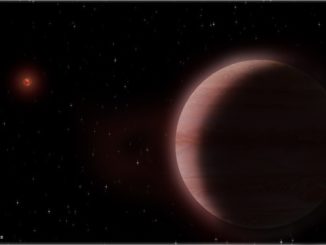
In what amounts to a dress rehearsal for NASAS’s next planet-hunting satellite, researchers sifting through data collected by NASA’s ageing Kepler space telescope have found nearly 80 new exoplanet candidates amid some 50,000 stars, including one possible world 2.5 times the size of Earth orbiting the brightest star yet found by Kepler to host a planet.
The presumed planet orbits the star HD 73344, about 114 light years from Earth, every 15 days at a distance that translates into a surface temperature of 1,200 to 1,300 degrees Celsius (about 2,000 degrees Fahrenheit), roughly the temperature of lava pouring from a volcano.
“We think it would probably be more like a smaller, hotter version of Uranus or Neptune,” said Ian Crossfield, an assistant professor of physics at the Massachusetts Institute of Technology. Crossfield and graduate student Liang Yu described the observations in a paper published 20 June in The Astrophysical Journal.
The researchers used existing software to quickly search through Kepler data from two recent observing sessions, on the lookout for rapidly changing light curves representing the slight dimming of a star when a planet moves in front as seen by Kepler.
The database included light curves from some 50,000 stars that were collected during two 80-day observing sessions. the researchers were able to identify nearly 80 candidate exoplanets within a few weeks of the data’s public release.

Such an analysis has typically taken months or longer to carry out because Kepler normally images star fields behind the spacecraft, which follows Earth in its orbit around the sun. As a result, the target stars in such surveys are not readily available for detailed study until Earth swings back around the sun.
But Kepler’s recent C16 and C17 targets were in front of the spacecraft, and thus within Earth’s field of view, and will remain there for several months. That prompted Crossfield and Yu to carry out their analysis as soon as possible to permit additional near-term observations.
The speedy analysis served as a dress rehearsal of sorts, with Kepler at the end of its life and its follow on, NASA’s Transiting Exoplanet Survey Satellite – TESS – expected to commence science operations later this year.
“When the TESS data come down, there’ll be a few months before all of the stars that TESS looked at for that month ‘set’ for the year,” Crossfield said. “If we get candidates out quickly to the community, everyone can start immediately observing systems discovered by TESS, and doing a lot of great planetary science. So this [analysis] was really a dress rehearsal for TESS.”



